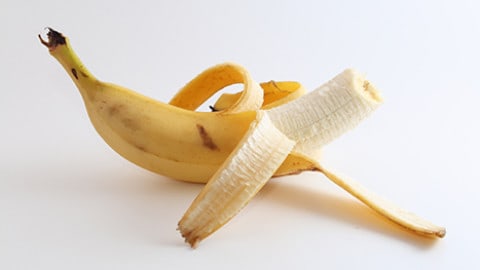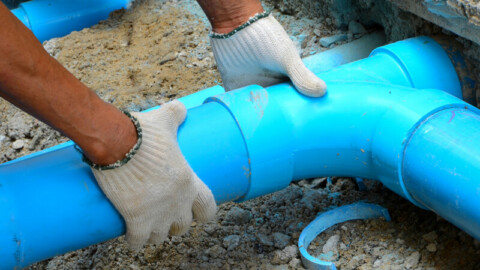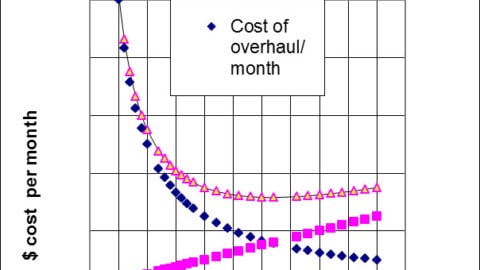By Christopher Allan, Journalist, Pump Industry magazine
Reverse osmosis (RO) is a filtration process where pressurised water is passed through a membrane to produce purified water, used across countless industrial applications including desalination and industrial wastewater treatment. In the context of minimising global energy consumption, water utilities and asset managers are now measuring their water treatment systems against both sustainability and cost outcomes, with new insights for RO pump selection. Here we explore how RO works, the types of pumps involved in different industrial applications, and how the right pump selection can meet both sustainability and cost reduction outcomes.
Reverse osmosis (RO) is a water treatment process where a raw water source, such as seawater, is separated into purified water and a concentrated waste of dissolved salts, minerals, bacteria, and other matter.
By pressurising water through a semipermeable membrane, RO pumps produce purified water in countless industry applications, from desalination plants to industrial wastewater treatment.
A core principle found across all these industry applications is that the pressure of the RO pump must be great enough to overcome – or “reverse” – the osmotic pressure that keeps unwanted particles suspended in the raw water source.
Getting to know RO pumps
Given that RO pumps must work against osmotic pressure, it is essential that the selected pump has high-pressure capabilities, holding implications for the minimum amount of energy required for the pump.
Indeed, it is estimated that RO pumps in a desalination plant can consume about 50 to 60 per cent of the total energy used by the plant; selecting a more energy efficient RO pump can easily carry across to total plant energy savings.
In terms of pump selection, for many years, centrifugal pumps were considered the best choice for RO, however, single stage centrifugal pumps – although popular across a range of water applications – cannot typically reach adequate pressures to achieve reverse osmosis. Increasingly, water-lubricated axial piston pumps (AP), coupled in trains, are being used to provide the most efficient and flexible solution to meet the changing water demand.
When comparing the energy efficiency of centrifugal and axial piston pumps across different pump configurations and flow rates, manufacturers have found energy savings of up to 16 per cent when using a high-pressure pump for RO, compared to the centrifugal setup across a variety of parameters. Such energy savings have been documented in both test studies and the operations of plants worldwide.
Alternatively, triplex piston pumps, side channel pumps and multistage pumps are also frequently selected for reverse osmosis treatment systems, offering adequate high pressure capabilities.
Hybrid pump solutions
While axial piston pumps are highly competitive in small and medium-sized RO plants, a hybrid solution drawing on both high-pressure centrifugal and axial piston pumps could be the best solution to deliver an efficient water desalination system for large urban water purposes.
Indeed, hybrid RO pump solutions can be ideal when retrofitting or upgrading larger existing pump systems, offering reduced upfront costs relative to complete system replacement yet still achieving an energy consumption reduction.
RO pump selection across industry applications
Different industry applications will also have different requirements of RO pump selection, with relevant factors including the chosen raw water source, the scale of the system and purification task, and the exposure of pumps to corrosive waste products.
Desalination
One of the most common applications of reverse osmosis, desalination involves the purification of seawater into fresh water for human consumption, washing and other uses. Desalination plants come in vastly different scales, from the seawater RO pumps found on modern ships to large, land-based desalination plants that provide municipal water supplies throughout the world.
Desalination RO pumps are typically constructed of materials like bronze and stainless steel, which have corrosion resistance to fluids with salt content. Furthermore, different levels of salt content in the raw water source will affect pump pressure – seawater RO pumps will require higher pressure levels when compared to desalination plants for brackish waters.

Industrial wastewater treatment
Countless industrial processes rely on large amounts of water, from manufacturing to cooling of machinery, and reverse osmosis can help treat industrial wastewater for hazardous residues like chemicals and oils, creating clean water for further use.
Industrial wastewater treatment tasks will vary greatly, as will the appropriate reverse osmosis water pump. For example, the wastewater created in a recycling plant could contain highly corrosive fluids, with downstream considerations for pump material selection.
Food and beverage industry
Food and beverage production processing is another industrial application for reverse osmosis systems, with a key consideration for pump selection being whether the system needs to be food grade. Examples of reverse osmosis in the food and beverage sector includes use in the dairy industry to separate whey from water and obtain concentrated whey protein, or even in maple syrup production, where water is derived from tree sap before it is boiled down to syrup.
Sustainability in water systems: an opportunity for savings
With the water sector responsible for four per cent of global electricity consumption, major utilities and asset managers have an important opportunity to retrofit and upgrade pump infrastructure to cut energy consumption, and associated costs, wherever possible.
A project in Italy highlighted that opportunities to reduce energy consumption in RO water treatment systems can be dramatic. High-pressure RO pumps were selected for the tender of a new ultrapure seawater RO plant for a power company.
The required specifications were that the desalination plant needed to have the capacity to provide 12,000 cubic metres of ultrapure water per day, cut the electricity consumption and carbon footprint, and complete the job quickly without any infrastructural modifications.
Four containerised RO units were selected and installed, and by 12 months into operation, energy consumption of the desalination plant’s processes were down by 88 per cent compared to the old system.
Energy recovery and chemical recovery: the future of sustainable water treatment systems?
Isobaric energy recovery involves the recycling of the pressurised energy that is typically lost in an RO pump’s output into the waste or brine stream.
By redirecting this hydraulic energy from the waste stream back into the cycle of pressurising the influent water source through the RO membrane, a water system can make massive energy savings, delivering efficiencies up to 97 per cent at all flow rates.
Indeed, a 2019 study from the Massachusetts Institute of Technology (MIT) revealed that the brine waste generated by a desalination plant can also be converted into many useful chemicals, including sodium hydroxide– a chemical often used on-site to pretreat seawater itself.
Given that global production of water via desalination can create similar volumes of concentrated brine, any opportunity to safely recover useful chemicals from RO waste products is a welcome one, slashing waste disposal costs and even creating new revenue streams for the newly processed chemicals.
In summary, sustainable practices can be applied throughout reverse osmosis treatment systems, from the efficient pump selection and isobaric energy recovery that targets energy consumption, to simply being smarter with waste products such as concentrated brine.
Indeed, many of the opportunities for sustainable practices that tackle both energy consumption and its associated costs can be extrapolated to applications throughout the water sector.


















